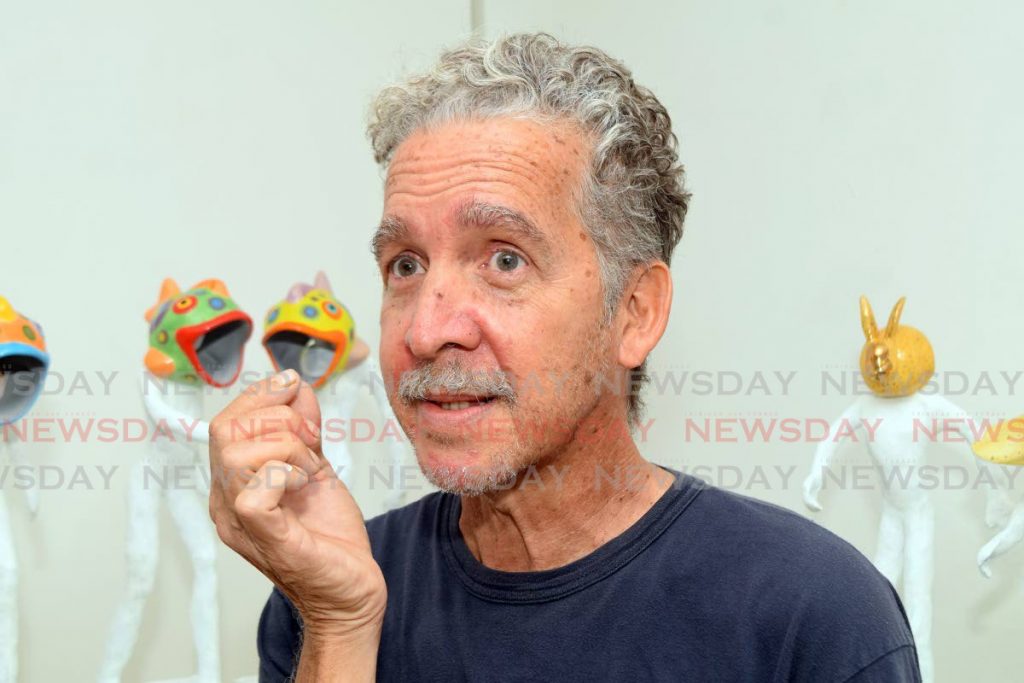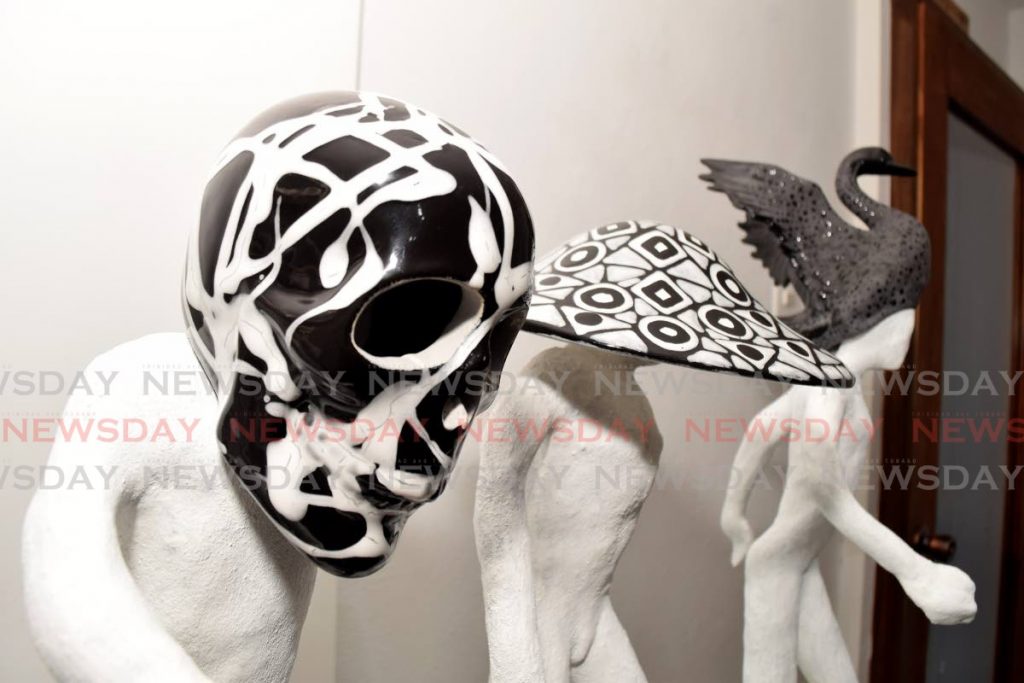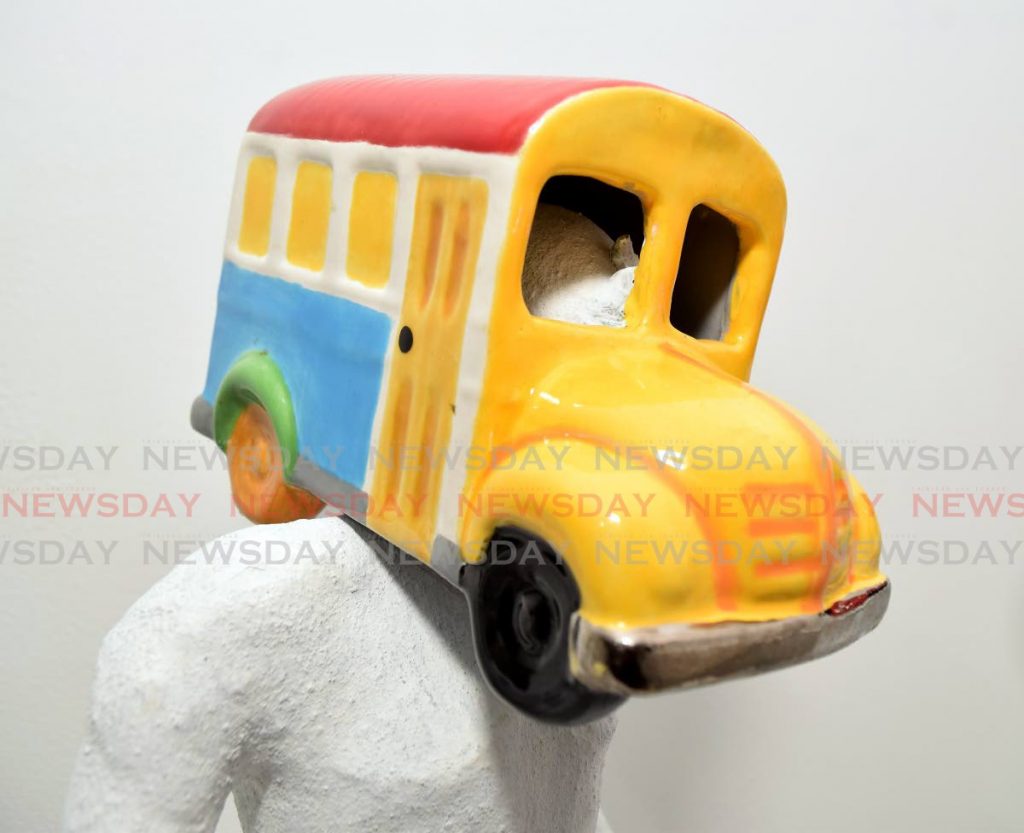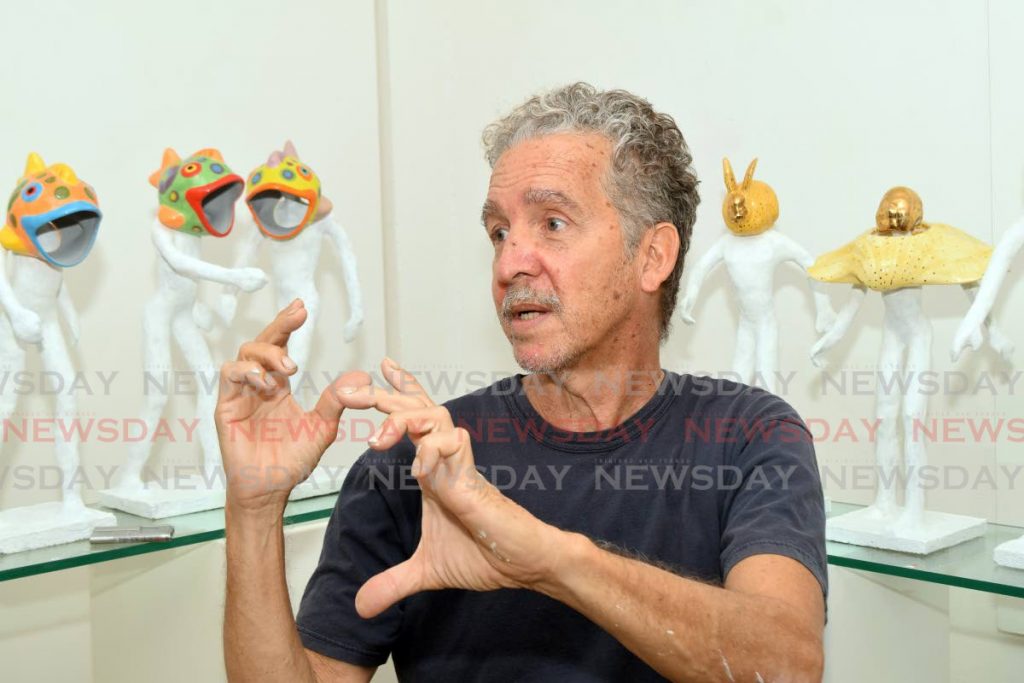This is My Carnival: Colin Gill's modern approach to mas as art

Small white humanoid figures in various walking positions, juxtaposed against richly coloured headpieces, are what you see in Colin Gill’s My Carnival.
However, as with most art, that description is too simplistic to capture the themes and beauty on display. Most of the detail is created by the colour, rather than the forms – of tea trays, rabbits, midnight robber hats, skulls, swans, crabs, frogs, fish and other creatures and objects.
The hand-made concrete sculptures, which took him two years to make, were part of the 100 Marchers exhibition he did last October. He then used epoxy to attach most of the headpieces, which were originally greenware (unfired clay pottery) decorative ornaments before he altered, glazed and fired them.

Gill told Sunday Newsday he used to be a 2D artist. It all started in the 1980s, when he would visit an art shop in West Mall to look at the paintings. He learned they were mass-produced in Japan and China, so he researched how it was done, bought the equipment, and started producing “slick art.”
Every year the art shop ordered 100 pieces from him. It made him money, but it was not satisfying. So, he started to teach himself other types of art, including pottery, sculpting, painting and collage.
Then he got into Carnival, and, for the past 30 years, he has been building king and queen costumes for bands such as Antourage Productions, and D’Krewe, as well as with renowned masmaker Roland St George. Part of that was making models of the costumes to scale before building them.

“While setting up that show (100 Marchers) I was wondering, ‘Oh my God, what am I going to do for Carnival? Every year I make something, but with covid it was cancelled. I thought, ‘My Carnival has to be special!’”
With that urge to create, he took a second look at some previously collected greenware ornaments.
“I took the greenware and put it on the walker’s head and realised I could make a whole band like that.
“I always wanted to do a king and queen sailfish but no one ever took me on. Here, I made my own mini version with angelfish. I was happy and excited because I was combining my art and Carnival.”
The idea was firmly planted in his mind, so he started studying glazing, which he had never done before. The application of colour was a steep learning curve, and some of his first pieces did not turn out great, while some of the ornaments cracked or broke as he altered them, but he kept at it

“It seemed like a good idea at the time and I think it worked out really well. We got a good response.”
Gill said he “saw everything” mas-related backstage, on the stage, and on the road during Carnival over the years. And almost all of the 39 pieces of My Carnival represent a mix of memories and creativity.
For example, the ceramic bus, Flat for Rent, is based on the reality of people having to diversify to manage their finances. In this case, no one was travelling during the lockdown, so a figurative bus driver modified his bus into an apartment so he could rent it and make some money.
“That is how Trini people make Carnival. They invent something. Traditionally, Carnival is invention and it’s about what is happening around you all the time – politically, economically, etc – and you make things up.”
Alligator came from a time he saw five big men with weapons surrounding a caiman trying to figure out how to kill it to cook it. That pieces, and some of the others with animals, are a memorial of the joys of nature, which many humans try to destroy.

The church piece is representative of the burden of the church, with covid19 patients dying alone, and funeral attendees being limited and having to stay apart.
“Even if you are an atheist or non-believer, you will believe in something after seeing someone on a ventilator suffer and die. That’s why I put the church in a prominent red. It’s no longer hidden behind a big tree, it’s bright for you to see, come straight to the door. People need each other more than ever now.”

Gill said this show has him excited about pottery once again. Where he lives, he can see people walking up and down a hill. They are too far away to see their arms or legs, so the forms look like ghosts. So he would like to experiment with making similar forms. He also has about 30 concrete walkers left and is in the process of making plans for them in another exhibition.
My Carnival showed at The Frame Shop – A Space Inna Space gallery, Carlos Street, Woodbrook from February 27-March 13. However, Gill is willing to do commissions for those who missed the chance to buy one of his pieces.


Comments
"This is My Carnival: Colin Gill’s modern approach to mas as art"